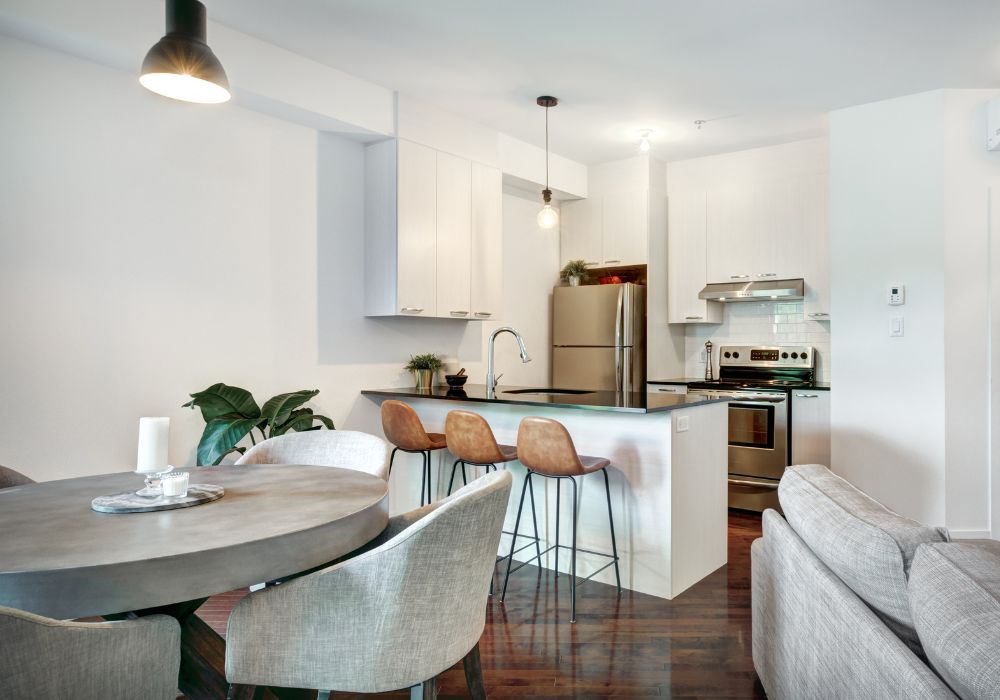Living in small spaces offers special difficulties, especially in relation to storage. Maximizing every inch of your current space without breaking the budget or changing the property in ways that might compromise your security deposit depends on budget and renter-friendly solutions. This page will look at creative, useful storage ideas that can turn small spaces into orderly refuges.
Contents
Challenges of Living in Small Spaces
Living in small spaces offers many difficulties, especially in terms of juggling the need for storage with preserving liveable surroundings. Often, the small square footage becomes quickly crowded with daily needs, which makes the space feel uncomfortable and confined.
This congestion not only compromises the home’s functionality but also its visual attractiveness, so trapping its occupants. Aiming to maximize every nook and cranny, strategic storage solutions become absolutely vital to help with these problems.
Moreover, residents of small spaces frequently face difficulties in adapting larger furniture pieces and conventional storage systems into their tighter quarters. Traditional storage solutions are often too bulky or inflexible to work effectively in reduced areas.
This can limit the ability to personalize and optimize the living space, compelling individuals to seek out more creative, space-saving alternatives. The necessity for adaptable and scalable storage options is paramount to enhance both the usability and enjoyment of living in small spaces.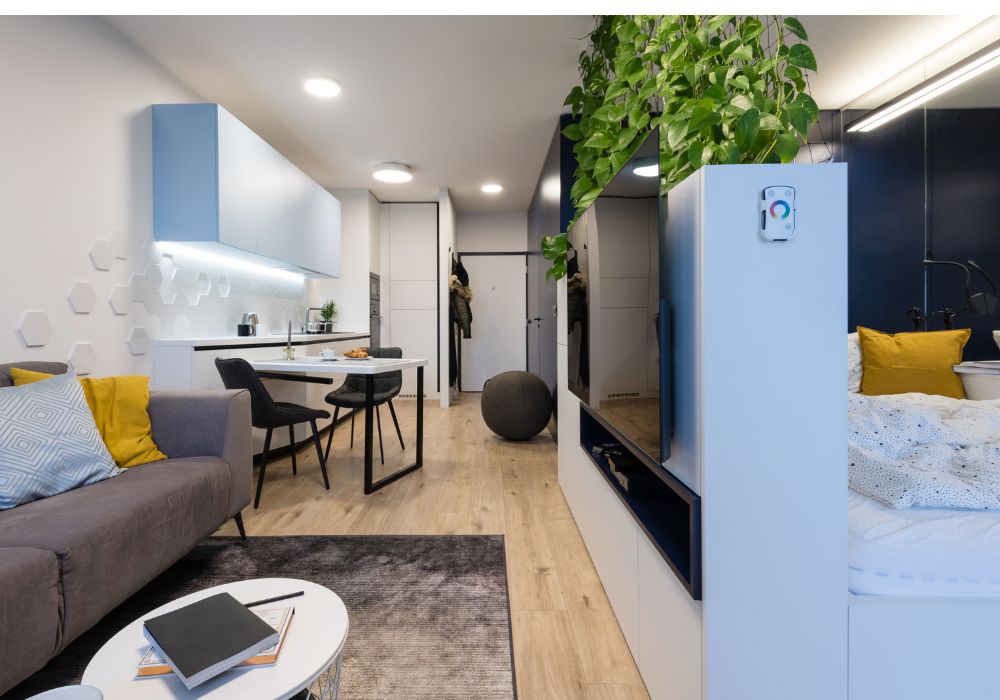
Utilizing Vertical Space
In optimizing storage in tight quarters, utilizing vertical space is an essential strategy for anyone living in small spaces. Vertical storage solutions allow you to take advantage of every inch of available wall and air space, transforming previously unused areas into functional storage zones. This approach not only helps in decluttering the floor area but also enhances the visual expansiveness of the room. By directing the eye upward, these solutions can make living in small spaces feel larger and more open.
Floating Shelves: Benefits and Tips for Installation
Floating shelves are a stylish and practical addition to any small living space. These shelves offer a minimalist look while providing ample storage for books, decor, and other essentials without the bulkiness of traditional shelving units.
They can be installed in various strategic locations, such as above the sofa, along the kitchen backsplash, or even around a bed frame, effectively utilizing the vertical space that is often left empty.
When installing floating shelves in small spaces, it’s important to consider the weight capacity and the type of wall you are mounting them on. Using sturdy brackets and ensuring that the shelves are anchored securely into wall studs can prevent sagging and accidents. Additionally, arranging items on the shelves in a balanced way can help maintain a clean, uncluttered look, making the living area feel more spacious and organized.
Hanging Organizers: Creative Uses for Doors and Walls
Hanging organizers are another brilliant way to capitalize on vertical space in small living environments. These versatile tools can be used on the backs of doors or on empty wall spaces to store everything from shoes and accessories to kitchen tools and bathroom essentials. By elevating these items off the floor, you free up critical floor space, making your home feel larger and more orderly.
One efficient use for hanging organizers is in the closet. This makes the most of closet door storage capacity and provides a handy spot for keeping regularly used items including hats, scarves, and belts.
In the kitchen, over-the-door organizers can also store small pots, utensils, and spices, so freeing up valuable cabinet space and making these items readily available during cooking.
Hanging organizers in the bathroom might change how you arrange bath products and toiletries. Using plastic or waterproof organizers will help you keep these things neat and dry without compromising useful counter or cabinet space. In bathrooms typical of small living quarters, where every square inch counts, this is especially helpful.
Vertical Dividers: Maximizing Cabinet and Shelf Efficiency
For small living spaces, vertical dividers in cabinets and shelves are revolutionary for preserving organization. These separators save space and make access to objects like cutting boards, trays, and baking sheets easier by allowing you to store them easily.
This approach can be especially helpful in small spaces, such as offices and kitchens, where maximizing internal storage efficiency is vital.
Custom-fit or adjustable dividers let you be flexible as your storage needs evolve and help to precisely match your needs. Living in small spaces, where minimizing clutter and maximizing function is essential, the ability to rapidly and effortlessly find what you need without disturbing the entire area is priceless.
Anyone trying to make their small living area more livable and functional would be wise to include vertical storage options.
These techniques maximize storage and also help the house to feel more open and airy. Living in small spaces doesn’t have to mean living with less; rather, it just means thinking creatively about how to make the best use of every inch of your space as you apply these vertical storage ideas.
Multipurpose Furniture
Living in small spaces makes furniture that has multiple uses quite valuable. Designed to be flexible and fit for many purposes, multipurpose furniture makes best use of available space.
These pieces not only save space but also help small living area residents minimize clutter by combining purposes that would usually call for several separate objects. Including such furniture into your house will help you to turn a small space into a useful and fashionable area, so improving the comfort and organization of daily life in limited surroundings.
Convertible and Modular Furniture
Another creative answer for living in small spaces is convertible furniture. For those with limited space, pieces like sofa beds, expandable dining tables, and foldable desks can serve a useful alternative depending on your immediate need. Small areas would also benefit from modular furniture, which can be rearranged into several configurations since it can be fit for different events and uses.
For daytime use, a sofa bed might be a pleasant couch; but, it can also be a bed for overnight guests, so reducing the need for a separate guest room. During the day, a small desk might be used; then, evening dinner guests can be accommodated by extending an expandable table. Effective management of living space in small flats or homes depends on such adaptability.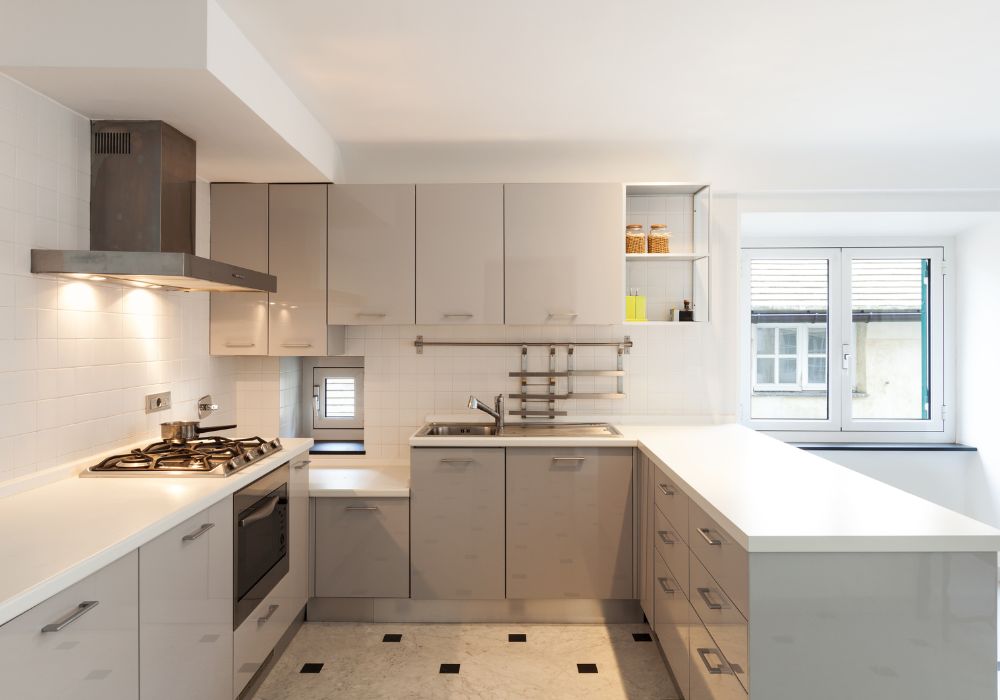
Dual-Purpose Kitchen and Dining Furniture
For those living in small spaces, space-saving furniture with dual uses can be especially helpful in the dining room and kitchen. A kitchen island with foldable extensions can be a dining table and a place for food prep. Bar stools under the counter can also provide casual seating without sacrificing the walking area required in close-knit kitchens.
Selecting furniture with built-in storage or height adaptability will also improve the dining area’s usefulness in small spaces. For very small homes unable to fit a separate dining area, a coffee table that rises to become a dining table is ideal. Around a dining table, benches with storage under the seating can also be utilized to provide seating as well as storage for dining accessories including table linens and cutlery.
Choosing the Right Pieces
Choosing appropriate multipurpose furniture requires weighing the dimensions of your living area with the particular requirements. Accurate measurement of your space is crucial as well as considering creatively how a piece could have several uses. Additionally, take furniture’s appearance into account to make sure it not only maximizes space but also enhances the general feel and look of your house.
Good furniture choice in small areas is mostly dependent on giving functionality top priority without sacrificing design. Seek for pieces with simple lines and neutral colors to help your room seem more unified and larger.
Including multipurpose furniture is a calculated way to maximize the enjoyment and efficiency of small living quarters. Selecting well-made items with several purposes will help you to maximize your space, clear clutter, and improve the general usability of your house. Although living in small spaces calls for some imagination and adaptability, with the correct furniture these areas can be just as cozy and fashionable as bigger houses.
Decluttering and Organizing
Decluttering and organizing are critical when living in small spaces, as they directly influence how spacious and functional the area feels. Efficient organization strategies not only help in maximizing the available space but also contribute to a more peaceful and enjoyable living environment. For those residing in small spaces, adopting a systematic approach to decluttering can transform a cramped area into a neatly organized and airy space.
Best Practices for Decluttering Small Spaces
The first step in effective decluttering when living in small spaces is to adopt a minimalist mindset. This means regularly assessing your belongings and deciding what truly adds value to your life.
One popular method is the one-in, one-out rule, which encourages you to discard or donate an item every time you bring a new one into your home. This practice helps prevent the accumulation of unnecessary items that can quickly consume valuable space.
It’s also beneficial to categorize items as you sort through them, separating them into keep, donate, and discard piles. For those living in small spaces, it’s crucial to be ruthless in these decisions to ensure that only essential or highly valued items take up the limited space available. Regularly scheduled decluttering sessions can prevent the overwhelming build-up of clutter, making it easier to maintain a tidy home.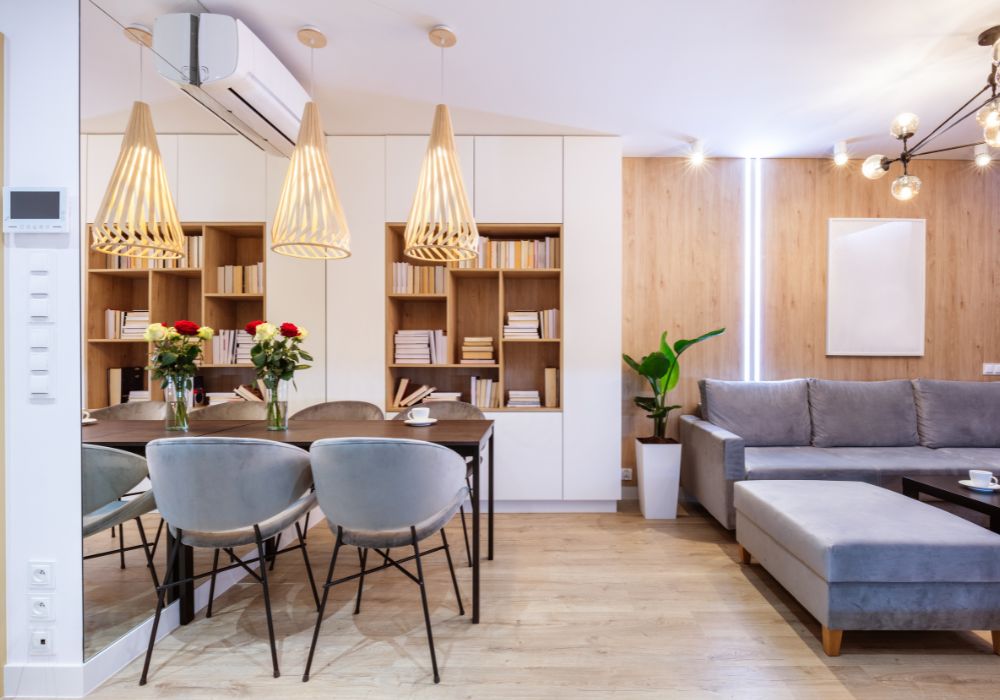
Organizational Tools and Products That Maximize Space
Effective organization in small spaces often relies on using the right tools and products. Over-the-door organizers, under-bed storage bins, and stackable containers can dramatically increase your storage capacity without encroaching on living areas. These solutions are particularly useful in small spaces, as they utilize often overlooked storage areas, such as vertical space and under furniture.
Drawer dividers and shelf organizers can also play a significant role in keeping small spaces organized. These tools help compartmentalize your belongings, making them easily accessible and preventing the drawers and shelves from becoming cluttered catch-alls. Using clear storage containers can be especially helpful, as they allow you to see the contents at a glance, saving time and reducing the frustration of searching through multiple opaque boxes.
Developing a Sustainable Organizing Routine
Maintaining organization when living in small spaces requires not only initial efforts to declutter and organize but also the establishment of a sustainable routine. Daily practices such as making the bed, washing dishes immediately after use, and returning items to their designated places can significantly impact the overall tidiness of the space.
For those living in small spaces, it’s also advantageous to reassess the organization system periodically. What works initially might need adjustment as your lifestyle and belongings change. Keeping the organizational system flexible and adaptable to your current needs will ensure that living in small spaces remains manageable and pleasant.
Utilizing Digital Solutions
In today’s digital age, reducing physical clutter by digitalizing items can be a huge space-saver for those living in small spaces. Opting for electronic books, digital files instead of paper, and online subscriptions can decrease the need for physical storage. Implementing a digital organization system for documents and media can not only clear up physical space but also simplify the search and retrieval of information.
Living in small spaces challenges residents to think differently about their possessions and space. By effectively decluttering and implementing smart organizational tools and habits, it’s possible to create a living area that feels spacious, clean, and serene. The key is consistency and choosing strategies that fit your lifestyle, ensuring your small space is both functional and welcoming.
Hidden Storage Solutions When Living in Small Spaces
Living in small spaces calls for maximum storage in every imaginable location. Because they cleverly hide items in unexpected areas, hidden storage solutions can be especially useful as they help to keep a clutter-free surroundings. For people living in small spaces, these creative storage solutions can greatly improve the aesthetic appeal and utility of their living quarters.
Under-Bed Storage: Making the Most of Hidden Spaces
For those living in limited quarters, a classic hidden storage solution is using the area beneath the bed. Extra bedding, shoes, or even off-season clothes can be stored under-bed containers, drawers, or even built-in platforms to keep them out of sight but readily available. Though it’s sometimes disregarded, this area is perfect for keeping big objects that won’t fit in small closet spaces.
Behind-the-Scenes Storage: Ideas for Closets and Cabinets
The backs of closet doors and cabinet door insides provide excellent real estate for covert storage in small living areas. Your storage capacity will be much enhanced by installing slim shelves, hooks, or rack on these surfaces. These solutions free up more valuable storage space around the house by fitting for storing cleaning supplies, jewelry, accessories, or little household tools.
Multi-functional Panels and Furniture
Another clever way to maximize small space storage is with furniture pieces and multifunctional panels. A mirror set over a door or on a wall, for example, can swing out to show a full-length storage cabinet behind it. Likewise, ottomans and sofas with storage spaces offer not only a place to relax but also a covert area to keep books, technology, or board games.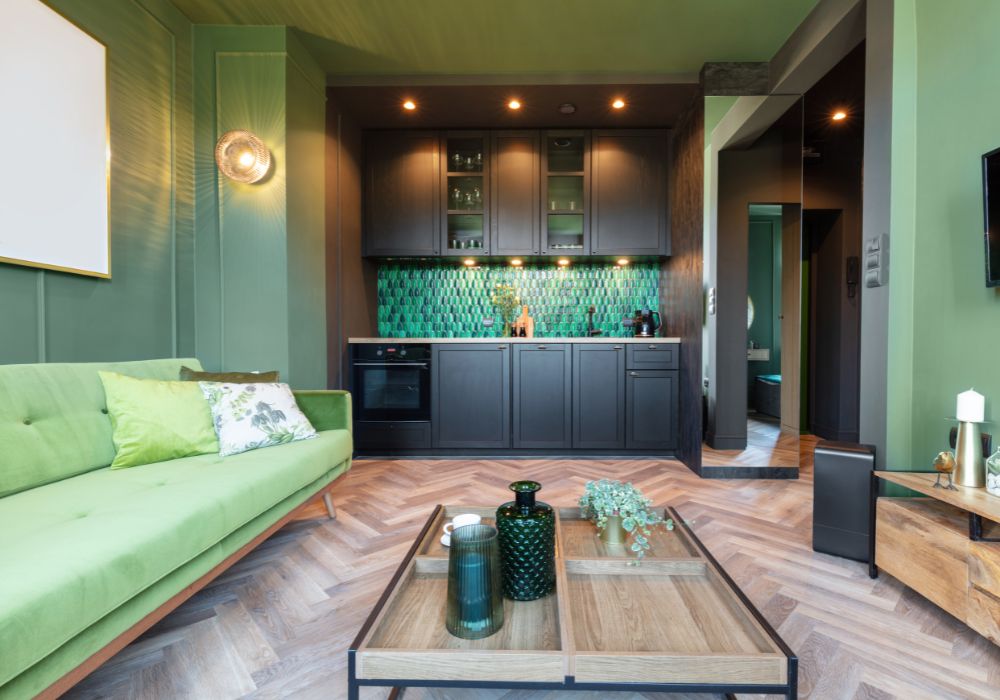
Recessed Wall Spaces
One effective way to create more storage in small spaces is by utilizing recessed wall spaces. You can convert the area between wall studs into niches for storing books, decorative items, or even small electronics. This built-in storage doesn’t protrude into the living space and can be concealed with a simple curtain or a decorative panel when not in use.
Toe-Kick Drawers
The unused space beneath kitchen or bathroom cabinets, known as the toe-kick area, can be transformed into hidden drawers. These slim storage compartments are ideal for storing flat items such as baking sheets, cutting boards, or even extra toiletries. This solution keeps necessary items handy without disrupting the overall design and layout of the room.
Staircase Drawers
For those living in small spaces with staircases, converting each step into a drawer offers a unique storage solution. These drawers can house shoes, tools, or other household items, effectively utilizing an area that typically goes unnoticed. This type of storage not only maximizes space but also keeps the items organized and out of sight.
Ceiling Storage
In rooms with high ceilings, consider installing overhead storage compartments or hanging nets to store items that are infrequently used, such as seasonal decorations or camping gear. This option keeps the floor space clear and the items out of the way but still accessible when needed.
Living in small spaces requires creativity and strategic planning to use every inch of available space effectively. Hidden storage solutions offer a way to keep your living area organized and spacious, proving that even the smallest spaces can be highly functional with the right storage strategies.
Conclusion
Living in small spaces calls for innovative use of every square inch to preserve both style and utility. Maintaining the area clutter-free and comfortable depends on smart storage solutions and multifarious furniture. Even the smallest areas can be turned into comfortable, efficient homes with careful design decisions and thoughtful planning to get the most out of your small interiors.

